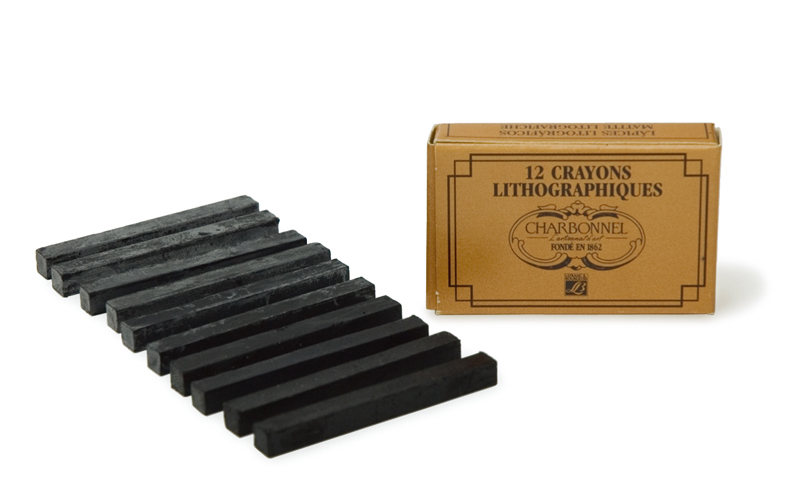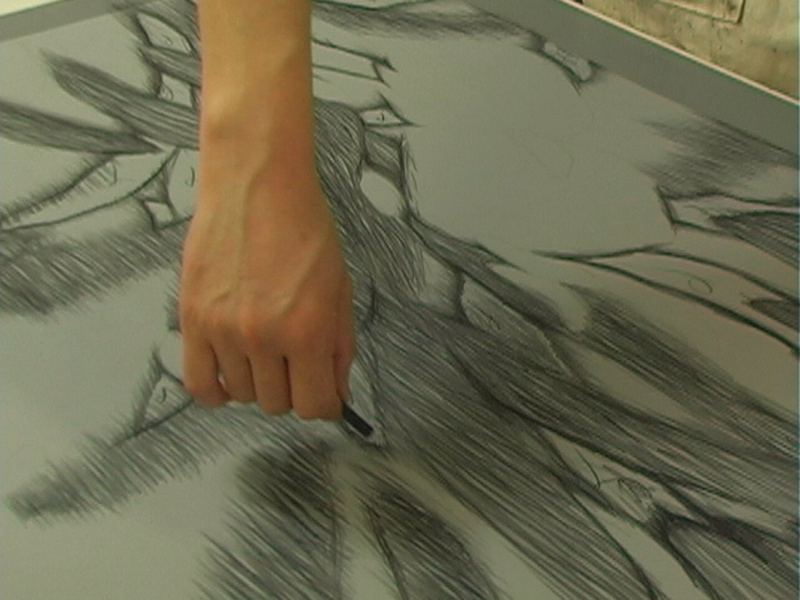Lithographic Crayons
リトクレヨン
Litocrayon
Lithographic crayons are crayons with a high oil content used in lithography.
They are available in pencil and stick (like Conte crayons) forms. Both types come in varying degrees of hardness so they should be selected according to drawing conditions. Care must be taken when purchasing the crayons as each manufacturer has its own way of indicating hardness. A portcrayon is useful when using the stick type. The pencil-type crayons are called lithographic pencils. These are wrapped in peel-away paper casing which can easily be removed to expose the core.
Lithographic rubbing crayons, used by applying some on a piece of cloth or finger and rubbing this on the plate, are also available but they are difficult to obtain in Japan. Lithographic crayons are made of beef tallow, Marcel soap, soot (carbon black), beeswax, shellac, etc. When these tallow and soap ingredients are applied to the plate, they bind with the metal and adsorb onto the surface, producing a sensitized area which repels moisture.
As an alternative, DERMATOGRAPH pencils (Mitsubishi Pencil) may be used instead of lithographic crayons. DERMATOGRAPH pencils contain large amounts of wax and can be used in much the same way as lithographic crayons, but they are not available in varying degrees of hardness and must be strengthened with tincture for platemaking.
Lithographic crayons can be purchased at art supply stores that handle printmaking supplies.

 Drawing with a lithographic crayon
Drawing with a lithographic crayon
